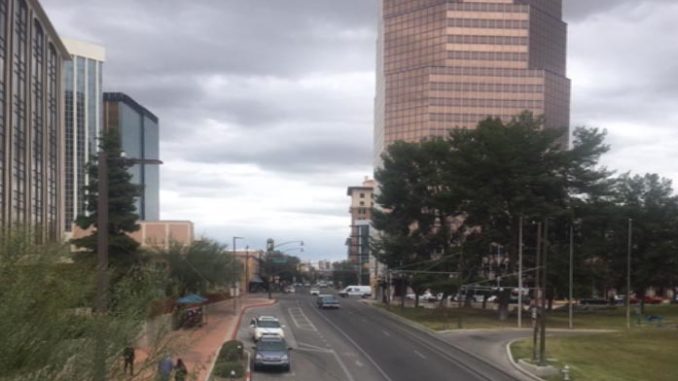
A key urban ingredient for the kind of young people Tucson badly needs to attract, and something future movers & shakers can keenly sense, is a City’s “vibe”. For young people it’s a real thing, and for the ones you NEED to keep, it transcends the usual municipal attractions.
“Is this a place that’s actually going somewhere? A place I can invest my most precious possessions (my youth, talent, ambitions, etc.) for a great return?”
That ‘vibe’ is more than some tattooed bohemian subculture of artsy, run-down music & restaurant venues, low grade galleries, miles of ugly bad roads with dilapidated housing & buildings, or even a bright, sparkling, newly-remade, (albeit vacant), downtown.
A positive urban vibe is an active, engaging attitude towards life. It’s a pervasive optimism to the opportunities ahead; opportunities that local leadership actually seizes & delivers on. It’s not a passive world view, or an ingrained cultural fatalism, so frequent in the Latino Southwest.
“But we have this gigantic state university, Rah-Rah!” Doesn’t matter if 80% of the 45% who actually graduate leave.
5 years ago, I lived downtown in a city that turned itself around from the very bottom of the postwar urban nightmare: Chattanooga Tennessee, population 183,000 city, 547,000 metro (2018). All the details of their recent 15 year history aside, take my word for it—there is no sense of powerlessness & passivity in the “Gig City” today.
Chattanooga has a major branch of the University of Tennessee on a large urban campus near downtown. More than 80% of their graduates stay in the area. Unlike Arizona, Tennessee has earned a tremendous return on that particular education investment.
Chatty’s incredible municipal fiber-broadband, in just 10 years, has attracted a “Who’s Who” of the Fortune Global 1000, with more coming monthly just to see it for themselves. The cable cartel tried to stop it but failed.
In 2018, INC Magazine reported Chatty’s previous 5 year accumulated venture capital for startup company exits totaled some $1.8 Billion (671 companies + 14,000 employees). And prior to COVID-19, they’d almost replicated that in just the last 2 years.
Do you think young people in Chattanooga feel the Dirty T’s sense of aimlessness? Not a [expletive] chance.
While Tucson’s Hard Left hipster-losers sneer at Phoenix, like its recent trifecta of tech recruitments, Chattanooga has its own Phoenix just down the road; the Atlanta conurbation, population 6 million.
What the local business & political leadership realized was Chattanooga had a real opportunity to be this positive contrast to Atlanta. Aside from their unique muni-broadband, they emphasized their newly renovated river-front for large-scale events and water access, and the many different activities in the surrounding mountains.
I’m not saying Chattanooga is perfect, but they have used legal means to address long-standing problems. Like seizing, bulldozing, and repurposing inner city crack-house lots for renewed housing. And there’s a proposal to introduce repeat offenders to the City’s ubiquitous public Wi-Fi system; nothing like those unremovable, court-ordered ankle bracelets to track urban crime and modify behavior.
This kind of large-scale strategic thinking is lacking in Tucson. Just like the breathtakingly obvious strategy of incorporating the near-40% of the Tucson Metro’s un-incorp’d CDPs, as currently plundered by PimaCo, into 3-5 vibrant, standalone cities. Virtually all but two of Chattanooga’s previously adjacent CDPs have been municipally incorporated.
So ‘Dirty T’, as I asked before, where are your ideas from the future?
Sellers is a South Park Republican who lives in incorporated Oro Valley. His background is federal tech-transfer commercialization.
